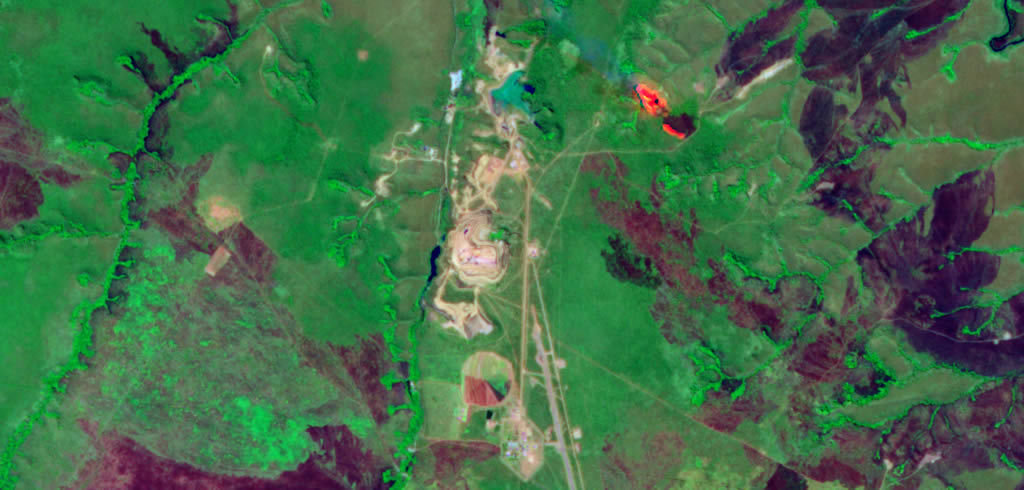Palaeontologists have discovered the tracks of 118 million year old dinosaur, crocodile and “exceptionally large” mammal tracks in one of Africa’s largest diamond mines.
Researchers found nearly 70 distinct sets of tracks in a small sedimentary basin in the Angolan Catoca mine, which was formed during the Early Cretaceous period around 118 million years ago.
Geologist Vladimir Pervov first uncovered the mammalian tracks in December 2010, and contacted paleontologist Octávio Mateus, who visited the mine and found the dinosaur tracks while collecting the footprints in July 2011. The Catoca mine, the fourth largest diamond mine in the world, suspended operations for eight months in order to preserve the findings.
The mammalian tracks came from an animal about the size of a modern badger or raccoon, far larger than any mammal previously known to exist during the period.
The closest species the mammal might relate to is that of a large mammal found in China, which measured between 42 and 68m in length, but comparison with the Catoca tracks is not possible because the skeleton lacked hands and feet.
One of the authors of the study, Marco Marzola, told IB Times:
“We cannot narrow down to a species but we can say they do belong to – they were made by an exceptionally large mammal – that we can say for sure.”
18 sauropod tracks with preserved skin impressions as well as other tracks attributed to a crocodilomorph, or relative of the modern crocodile, were also found near to the mammalian tracks.
The discovery of these tracks represent the first fossils from the inlands of Angola ever found, with the work part of the PaleoAngola Project, a scientific program of collaboration between various international institutions with the aim to research and promote vertebrate paleontology in Angola.
The study was published in the Journal of Vertebrate Paleontology




